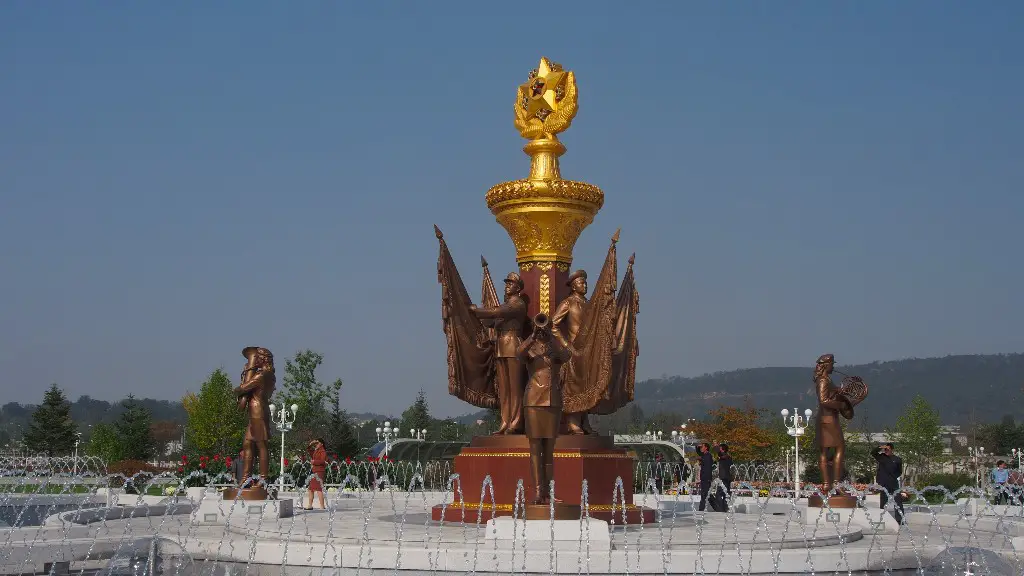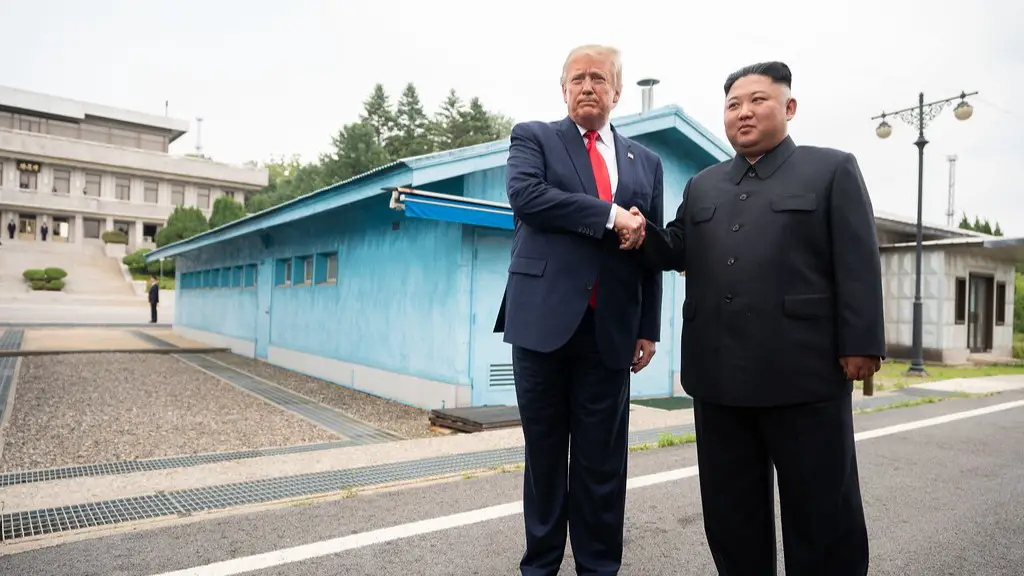Geographical Areas
North Korea and South Korea are both situated on the Korean Peninsula in Eastern Asia. North Korea has a total area of 120,538 square kilometers, while South Korea has a total area of 99,720 square kilometers. In terms of geographic size, South Korea is approximately 20% smaller than North Korea. However, South Korea has a much denser population, with an average density of 513 people per square kilometer, while North Korea’s population density is only 219 people per square kilometer.
Political Statuses
The two countries have vastly different political statuses. North Korea is officially known as the Democratic People’s Republic of Korea, and it is a single-party state under the rule of the Korean Workers’ Party. It is led by Kim Jong-un and is considered to be a totalitarian state. South Korea, on the other hand, is officially known as the Republic of Korea and it is a democratic state led by President Moon Jae-in. South Korea is a member of several international organizations including the United Nations, the G20, and the World Trade Organization (WTO).
Economies
When it comes to their economies, North Korea and South Korea have very different situations. North Korea’s economy is mainly based on agriculture and its industries are heavily subsidized by foreign aid and natural resources. In comparison, South Korea has developed one of the most advanced economies in Asia, with an industry-oriented economy focused on manufacturing and services. South Korea’s GDP (gross domestic product) per capita is much higher than North Korea, with South Korea’s GDP per capita being $38,288 in 2016, while North Korea’s GDP per capita was only $1,034.
Military Strength
When it comes to military strength, North Korea and South Korea have also been vastly different. North Korea has the fourth largest active troops in the world, with an estimated 1.2 million troops. South Korea also has an impressive number of troops, with an estimated 637,000 active servicemen. Furthermore, South Korea is known to have one of the most technologically advanced militaries in the world, with advanced weapons such as the F-15K fighter jet, K2 Black Panther main battle tank, and advanced warships. North Korea, on the other hand, is known to have many outdated weapons and equipment and they rely heavily on the support of their allies.
Political and Cultural Climate
The political and cultural climates of North Korea and South Korea are undoubtedly different. North Korea is governed by an oppressive government and all citizens live in constant fear. North Korea is also highly restrictive and censorship is widespread. In comparison, South Korea is much more open and relatively democratic. Its citizens are more tolerant and freedom of speech is respected in most cases. South Korea also has a vibrant cultural atmosphere, where its citizens uphold cultural traditions such as the use of hanbok (traditional clothing), and the eating of kimchi (Korean pickles).
Insight and Analysis
North Korea and South Korea are vastly different countries in many aspects. It is clear that South Korea has a much more developed economy and political system than North Korea, and its citizens are much more prosperous and enjoy much more freedom. South Korea is also technologically more advanced, with better weapons and weapons systems, while North Korea is heavily reliant on its allies. Moreover, the culture and atmosphere of South Korea is much more open and vibrant than North Korea’s oppressive climate.
Effects of the Korean War
The Korean War, which took place between 1950 and 1953, is widely seen as the event that shaped the current political landscape of North Korea and South Korea. The war was fought between the Republic of Korea (or South Korea) and the Democratic People’s Republic of Korea (or North Korea), as well as their respective allies. After the war, North and South Korea were left divided by the 38th Parallel, with the former forming the northern part and the latter forming the southern part. The war led to the establishment of two politically different countries, with South Korea becoming a comparatively democratic country and a major economic power in Asia, while North Korea became one of the most isolated countries in the world.
Political Relations
Since the end of the Korean War, political relations between North Korea and South Korea have been tense. In 2018, there have been several attempts to bridge the gap between the two countries, including an historic summit between the leaders of North Korea and South Korea. However, there are still major differences in their political stances and their respective governments have yet to reach an agreement.
International Tensions
The international tensions between North Korea and South Korea have been a major subject of concern in recent years. North Korea has repeatedly threatened to use its nuclear weapons against South Korea, while the United States and its allies have held several joint military exercises in the region. However, some progress has been made in reducing tensions, with both countries taking steps towards a more peaceful coexistence.
Influence of the United States
The presence of the United States in the Korean Peninsula has been a major factor in the political, economic, and cultural relations between North Korea and South Korea. The United States has long been the primary supporter of the South Korean government, providing economic aid and military protection, while also exerting pressure on the North Korean government. Although tensions between the two countries have have been reduced in recent times, the continuing influence of the United States remains a major obstacle to a peaceful resolution of the conflict.


